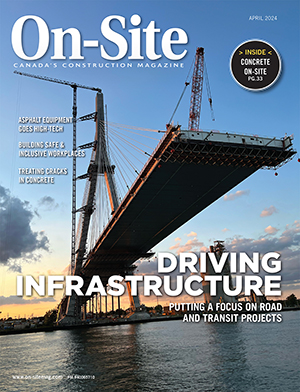
Builders Lien Act changes coming
By Lauren E. Kristjanson and Alexander Bjornson
Construction Law Risk ManagementOne victim may be the notorious Shimco Lien
Many enforceable legal rights exist independently of statute. An action for trespass on land, for example, does not rely on legislation for an enforceable claim against that trespass. Instead, the concept was created through the common law (i.e. by decisions issued by courts).
Liens against land, however, are entirely dependent upon statute. Laws creating liens on real property in British Columbia have been on the books since the late 1800s, with several significant changes since then. In 1997, the provincial government significantly overhauled the legislation and introduced the Builders Lien Act, SBC 1997, c. 45 (the BLA). This act currently governs builders liens in the province and has been called “a major cornerstone of construction law” by the British Columbia Law Institute.
A CHANGE IS IN THE AIR
Despite rapid evolution in the construction industry, the last significant change to the BLA occurred 18 years ago. As a result, there is movement to make some major reforms to the act that will impact players in the construction industry. In fact, the Law Institute has been tasked with carrying out a comprehensive review of the BLA and providing a report with recommendations for a legislative overhaul.
One of the issues expected to be dealt with in the new iteration of the Act is the so-called “Shimco lien.” This type of lien resulted from a British Columbia decision, Shimco Metal Erectors Ltd. v. North Vancouver (District), 2002 BCSC 238, aff’d 2003 BCCA 193 (Shimco).
In Shimco, the District of North Vancouver hired a general contractor for the construction of a tennis facility. As required by the BLA, the district maintained a 10 per cent holdback on the funds owing to the general contractor. When several subcontractors were not paid by the general contractor, they filed liens against the land. However, one subcontractor that did not take the necessary steps for filing and commencing its lien claim against the property claimed a lien against the holdback itself – rather than the land.
The issue before the courts was whether a subcontractor can have an independent lien against holdback funds, despite no longer having a lien claim against the land. Ultimately, the Supreme Court determined that the provincial legislature intended to create a lien against the holdback in addition to one against land. As a result, the subcontractor maintained its lien against the holdback. The decision was appealed and despite acknowledging the argument that a separate holdback lien could lead to “awkward and impractical consequences,” the Court of Appeal upheld the trial decision.
Due to the Shimco decision, it is now clear that in B.C. a lien claimant can enforce its claim as a lien against the land or as a lien against the holdback funds – now known as a “Shimco lien.” Importantly, a Shimco lien is not subject to the same registration requirements mandated for liens against land or other assets.
The establishment of this alternative remedy under the BLA was surprising to many involved in the construction industry and numerous commentators have expressed concerns with it.
In 2011, the B.C. Court of Appeal considered the Shimco lien in Wah Fai Plumbing & Heating Inc. v. Ma, 2011 BCCA 26. In that case, the owners did not keep the statutorily required holdback, but the subcontractor brought a lien claim against the amount that should have been retained.
The Court found that where no property existed for a lien to attach to, the lien could not exist. As the holdback was never created, the lien claim was unsustainable. Importantly, the Court noted that the system of dual liens established by Shimco was “not warmly received by the profession and was the subject of critical commentary.” Nonetheless, although the court recommended a cautious approach to any extension of the availability of the Shimco lien, it confirmed its earlier decision and suggested that the only way to address the Shimco lien is through the legislature.
LOOKING FORWARD
Based on this lukewarm endorsement of the Shimco lien by the Court of Appeal and the uncertainty it has caused in the construction sector, it is likely that any major legislative reform will include greater clarification of that form of lien, or even its abolishment.
Committee work on builders lien reform is ongoing and the Law Institute expects to have a final report on its recommendations for changes to the BLA sometime next year. Meanwhile, those in the construction industry will continue to grapple with the Shimco lien.
This article is for information purposes only and may not be relied on for legal advice.
_______________________________
Lauren E. Kristjanson is a lawyer at Borden Ladner Gervais LLP (BLG), practicing in the area of commercial litigation with an emphasis on contract and construction disputes. Alexander Bjornson is a lawyer at BLG, specializing in commercial and construction litigation.




